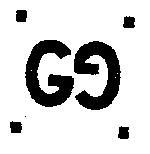In a recent decision of the General Court of the European Union (General Court), the Italian fashion house Gucci (Guccio Gucci SpA) once again drew the shorter straw against permanent rival Guess (Guess? IP Holder LP).
This judgment forms the most recent in a string of cases fought between the two companies throughout Europe, as they have been battling it out for a number of years with Gucci repeatedly alleging infringement of its rights by Guess. This time, EU figurative mark no. 5538012
(which was registered on 13 March 2008 for goods and services in classes 03, 09, 14, 16, 18, 25 and 35 and is owned by Guess) formed the basis of the Dispute.
Thereby, Gucci filed a declaration of invalidity against this mark with reference to Article 53(1)(a) in conjunction with Articles 8(1)(b) and (5) of Regulation No 207/2009 (the Regulation). The application was based on a variety of earlier figurative marks (registered inter alia for goods and services in classes 03, 09, 16, 18, 25 and dating back to as early as 1995) owned by Gucci:
 International trademark no. 644636; Italian trademark no. 657053
International trademark no. 644636; Italian trademark no. 657053
 EU trademark nos.4472081, 4517827, 2751535
EU trademark nos.4472081, 4517827, 2751535
Following rejection of the application by the Cancellation Division on 31 July 2014 and dismissal of the appeal by the Fourth Board of Appeal of the EUIPO on 27 May 2015 on the grounds that the signs at issue were not similar, Gucci appealed the matter to the General Court.
In its judgment, the Court focused mainly on the similarity of the trademarks, examining the signs within the context of their overall impressions and bearing in mind in particular their respectively distinctive and dominant elements. On this basis, the Court agreed with the finding of the Board of Appeal that the Guess trademark was not similar to Gucci’s registrations.
Thus, the Court argued the relevant public (who consisted of a general public with an average level of attention) would perceive the contested mark and assess it as a whole as a purely figurative and abstract sign with perfect symmetry from a vertical and horizontal point of view. The mark in particular consisted of four bold black elements in the form of irregular semi-circles of the same size, which had short perpendicular lines pointing in different directions at the edges. Further, each element was tilted slightly up- or downwards and turned in different directions. The two elements in the upper part of the sign intersected and mirrored each other, whilst they were merely joined to the elements in the lower part. Finally, the elements in the upper part mirrored those in the lower part.
The Court indicated the mark would therefore not be broken down into its individual elements by the relevant public. Rather, it would be perceived in its entirety and viewed as representing an abstract ornamental motif. In particular, contrary to the applicant’s claim, the public would not perceive a capital letter “G” in this mark – if at all, a capital letter “X”, the letter “e” or a combination of figures and letters (i.e. figure “3” and letter “e”) might be perceived.
In contrast, according to the Court the capital letter “G” was clearly discernible in all of the Gucci trademarks. In addition, the International trademark no. 644636, Italian trademark no. 657053 and EU trademark no. 122051 were also perceived more like rings or the links of a chain, with a black outline and a white inside. Further, EU trademark no. 122093 was made up of two non-touching components formed by a bold black line and surrounded by four black squares. Finally, EU trademarks nos. 4472081, 4517827, 2751535 consisted of five small elements, whereby the outer elements were connected to the centre by dots which created the impression of two diagonal lines and a cross pattern. On this basis, the marks at issue were by no means similar – the requirements of Article 8(1)(b) of the Regulation were not fulfilled.
This assessment also had to be applied with regards to Gucci’s plea relating to Article 8(5) of the Regulation. The Court indicated it was not apparent that the concept of similarity had a different meaning in this provision. It therefore was not necessary to assess the similarity of the marks anew as this had already been done within the context of Article 8(1)(b). Consequently, if there was no similarity between the marks, Article 8(5) also did not apply.
Only if there was some similarity (no matter how faint) between the marks at issue, did the Court have to carry out an overall assessment concerning a likelihood of confusion or link made between the marks, notwithstanding the low degree of similarity between them and taking into account inter alia the renown or reputation enjoyed by the earlier marks. However, as the Court had found no similarity between the marks, the Court of Appeal had decided correctly and accordingly Gucci’s plea had to be rejected.
The Court therefore dismissed the action in its entirety, rendering Guess the victorious party on this occasion.
_____________________________
To make sure you do not miss out on regular updates from the Kluwer Trademark Blog, please subscribe here.




